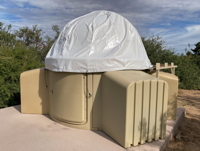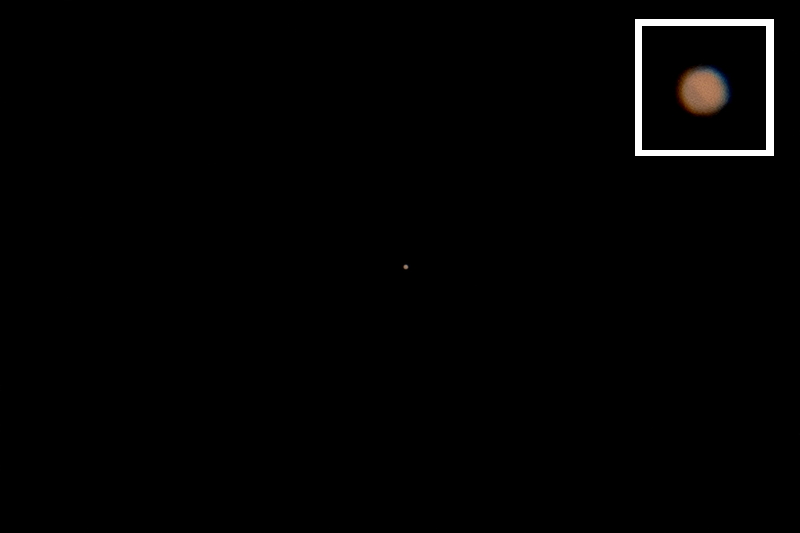Another Mars Occultation Dry Run
Posted: 6 December 2022
As forecast, clouds arrived on Thursday, 1 December 2022. With rain in the forecasts for the weekend, Friday, 2 December, I put the
Dome Cover
 ON. Rain began Saturday morning, 3 December, and continued on and off during the rest of the day (total 1.1"). Rain (total 0.57") continued on Sunday, 4 December. After some early morning rain (0.03") on Monday, 5 December, the sky began clearing mid-day.
ON. Rain began Saturday morning, 3 December, and continued on and off during the rest of the day (total 1.1"). Rain (total 0.57") continued on Sunday, 4 December. After some early morning rain (0.03") on Monday, 5 December, the sky began clearing mid-day.
|
Open: Monday, 5 December 2022, 1816 MST Temperature: 59°F, Humidity 61% |
Session: 1809 Conditions: Mostly clear |
Equipment:
12" f/8 LX600 w/StarLock
2" 24mm UWA eyepiece
2" 4X Powermate
2" Variable Polarizing Filter
Camera:
D850 DSLR
After arriving at the observatory I took the Dome Cover OFF.
1831 MST: LX600 ON, StarLock OFF, High Precision OFF.
Viewed Saturn, then Jupiter, 102X.
Viewed the waxing gibbous Moon, 102X.
Mounted the D850 DSLR at the 12" telescope prime focus (no star diagonal) to do some dry run exposure tests in preparation for the Mars occultation on Wednesday, 7 December. I did exposures at several shutter speeds, ISO 200, White Balance Auto. I then slewed to Mars and repeated the exposure tests at prime focus.
These exposures, both taken at 1/500sec, ISO 200, show the Moon and Mars as they will appear before and after the occultation. The inset shows a magnified version of Mars from the prime focus image.


Next, I mounted the D850 DSLR at prime focus + 4X Powermate (no diagonal). I did 1080p, 60 fps, video recordings of the Moon and Mars at several shutter speeds, ISO 2500, White Balance Auto. These 5 second videos were both taken at 1/320sec, ISO 2500. The portion of the Moon shown is near where Mars will reappear at the end of the occultation.
Click or tap to view video
Click or tap to view video
This image of Mars is a stack of 298 frames from the same video.

Mars was low in the eastern sky at the time of imaging, as it will be during the occultation on 7 December.
I removed the camera and viewed Mars and the Moon, 406X. When viewing Mars I mounted one of the 2" Variable Polarizing Filters on the Powermate and the other on the eyepiece. I then rotated the eyepiece to change the amount of polarization to reduce the brightness of the planet to better see surface details.
Lastly, I viewed Mars, 102X.
1940 MST: LX600 OFF.
|
Close: Monday, 5 December 2022, 1950 MST Temperature: 52°F, Humidity 69% |
Session Length: 1h 34m Conditions: Clear |
Comments are welcome using Email. Twitter users can use the button below to tweet this report to their followers. Thanks.
Cassiopeia Observatory Home Page
Copyright ©2022 Michael L. Weasner / mweasner@mac.com. Email Etiquette.
URL = http://www.weasner.com/co/Reports/2022/12/06/index.html
